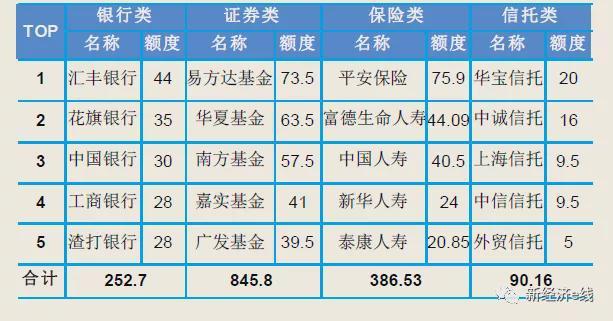历年基金冠军
Title: Understanding Historical Fund Performance and Analysis
Understanding Historical Fund Performance and Analysis
Investing in funds is a common strategy for many individuals and organizations seeking to grow their wealth over time. One essential aspect of making informed investment decisions is analyzing the historical performance of funds. In this guide, we will explore how to effectively evaluate historical fund data to make informed investment choices.
Before delving into historical fund data, it's crucial to understand the key metrics used in performance analysis:
- Annualized Return: This measures the average annual return of a fund over a specific period, typically three, five, or ten years.
- Standard Deviation: This indicates the volatility of a fund's returns. A higher standard deviation suggests greater volatility.
- Sharpe Ratio: This ratio assesses the riskadjusted return of a fund. It indicates how much excess return an investor receives for the additional volatility endured.
- Alpha: Alpha measures a fund's riskadjusted performance compared to its benchmark index. A positive alpha indicates outperformance, while a negative alpha suggests underperformance.
- Beta: Beta gauges a fund's sensitivity to market movements. A beta greater than 1 indicates higher volatility compared to the market, while a beta less than 1 suggests lower volatility.
Historical fund data can be obtained from various sources:
- Financial Websites: Websites like Morningstar, Yahoo Finance, and Bloomberg provide historical data on a wide range of funds.
- Brokerage Platforms: Many brokerage platforms offer tools for analyzing historical fund performance.
- Fund Company Websites: Some fund companies provide historical performance data on their websites.

When analyzing historical fund performance, consider the following factors:
- Consistency: Look for funds that have demonstrated consistent performance over multiple time periods.
- Volatility: Assess the fund's volatility relative to its benchmark index and compare it with similar funds.
- RiskAdjusted Returns: Focus on funds with strong riskadjusted returns, as indicated by metrics like the Sharpe ratio and alpha.
- Expense Ratios: Consider the fund's expense ratio, as high fees can erode returns over time.
- Manager Tenure: Evaluate the tenure and track record of the fund manager, as managerial expertise can significantly impact performance.
When utilizing historical fund data to inform investment decisions, adhere to these guidelines:
- Diversification: Build a diversified portfolio consisting of funds with different investment objectives and asset classes.
- LongTerm Perspective: Focus on longterm performance rather than shortterm fluctuations.
- Regular Review: Periodically review the performance of your fund holdings and make adjustments as needed based on changes in your investment goals or market conditions.
- Consultation: Consider seeking advice from financial professionals or consultants to ensure your investment decisions align with your financial objectives and risk tolerance.
Historical fund performance analysis is a valuable tool for investors to assess the past performance of funds and make informed investment decisions. By understanding key metrics, accessing reliable data sources, interpreting performance indicators, and following guidelines for usage, investors can navigate the complex landscape of fund investing with greater confidence and effectiveness.
